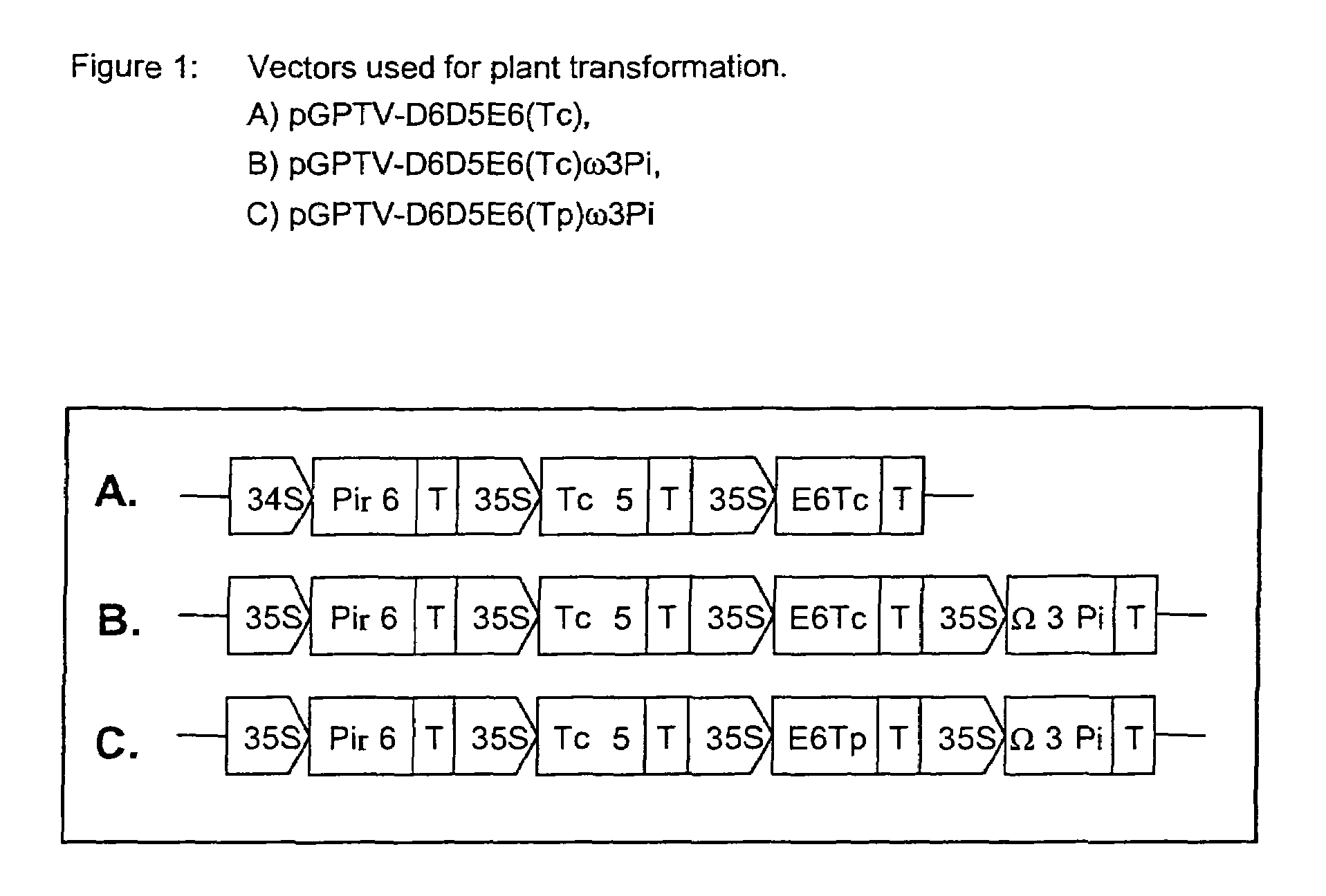Method for producing arachidonic acid and/or eicosapentaenoic acid in useful transgenic plants
a technology of arachidonic acid and eicosapentaenoic acid, which is applied in the field of process for producing arachidonic acid and/or eicosapentaenoic acid in useful transgenic plants, can solve the problems of high proportion of phospholipids and also cholesterol, and disadvantageous for widespread use in foodstuffs, and achieves simple, inexpensive, economical process
- Summary
- Abstract
- Description
- Claims
- Application Information
AI Technical Summary
Benefits of technology
Problems solved by technology
Method used
Image
Examples
example 1
General Cloning Methods
[0151]The cloning methods such as, for example, restriction cleavages, agarose gel electrophoresis, purification of DNA fragments, transfer of nucleic acids to nitrocellulose and nylon membranes, linkage of DNA fragments, transformation of Escherichia coli cells, bacterial cultures and the sequence analysis of recombinant DNA were carried out as described by Sambrook et al. (1989) (Cold Spring Harbor Laboratory Press: ISBN 0-87969-309-6).
example 2
Sequence Analysis of Recombinant DNA
[0152]Recombinant DNA molecules were sequenced with an ABI laser fluorescence DNA sequencer by the method of Sanger (Sanger et al. (1977) Proc. Natl. Acad. Sci. USA 74, 5463-5467). Fragments obtained by polymerase chain reaction were sequenced and verified to avoid polymerase errors in constructs to be expressed.
example 3
Cloning of Expression Plasmids for Expression in Plants
[0153]To transform plants, transformation vectors were generated on the basis of pGPTV-35S, a plasmid based on pBIN19-35S (Bevan M. (1984) Binary Agrobacterium vectors for plant transformation. Nucl. Acids Res. 18:203). For this purpose, an expression cassette comprising the promoter element CaMV35S (SEQ ID NO: 11) and the 35S terminator sequence (SEQ ID NO: 12; Franck, A., Guilley, H., Jonard, G., Richards, K. and Hirth, L. (1980) Nucleotide sequence of cauliflower mosaic virus DNA Cell 21 (1), 285-294) was assembled in a pUC vector. The promoter was inserted here via the SalI / XbaI restriction cleavage sites and the terminator sequence was inserted via BamHI / SmaI. This involved attaching a polylinker having the XhoI cleavage site to the terminator sequence (‘triple ligation’). The resulting plasmid, pUC19-35S, was then used for cloning PUFA genes. The open reading frames of the d6Des(Pir, SEQ ID NO: 1), d5Des(Tc, SEQ ID NO: 5) ...
PUM
| Property | Measurement | Unit |
|---|---|---|
| Fraction | aaaaa | aaaaa |
| Fraction | aaaaa | aaaaa |
| Fraction | aaaaa | aaaaa |
Abstract
Description
Claims
Application Information
 Login to View More
Login to View More - R&D
- Intellectual Property
- Life Sciences
- Materials
- Tech Scout
- Unparalleled Data Quality
- Higher Quality Content
- 60% Fewer Hallucinations
Browse by: Latest US Patents, China's latest patents, Technical Efficacy Thesaurus, Application Domain, Technology Topic, Popular Technical Reports.
© 2025 PatSnap. All rights reserved.Legal|Privacy policy|Modern Slavery Act Transparency Statement|Sitemap|About US| Contact US: help@patsnap.com

